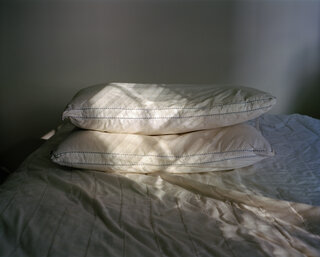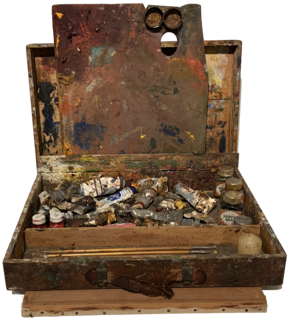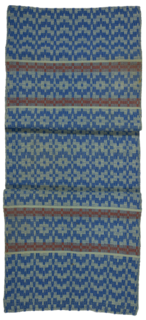
Jess T. Dugan
Curatorial Statement, Inward
Gregory Allicar Museum of Art at Colorado State University
Over the past six months, life as we knew it dramatically changed. Many of us found ourselves at home, separated from friends and family, and cut off from our typical social and communal interaction. In the beginning of the pandemic, despite its challenges, I embraced the slowdown; it came for me, personally, on the heels of an especially busy few years, full of travel and professional engagements throughout the United States. I was suddenly spending most of my time at home, no longer able to work in the way I usually do. As a portrait photographer, my work depends upon being in close proximity – often in indoor, private spaces – with other people.
These limitations, however, proved to be productive. I returned to making self-portraits, which have always been an integral part of my work, but which I hadn’t focused on intensely in recent years. I made new still life images, continuing my exploration of the ways in which objects reference human experience, relationships, and desire. Several months in, I realized that, with the absence of most other external commitments and distractions, I had turned inward. New ideas were coming to me; I found new ways to photograph in my home, which I had previously tired of, thinking I had already explored all of the options in that particular environment. The relative quietness of my professional life allowed me to focus on the more internal experiences brought on by the pandemic: isolation, the fundamental human need for connection, the importance of touch and caretaking, and the fear and anxiety brought on by a world seemingly out of control.
When I was putting together this exhibition, I sought works in the collection that spoke to this heightened internal state. Rather than choosing works based around a purely conceptual or intellectual premise, I chose them based on my emotional and psychological response. I was looking for work that mirrored my own reality – work that reminded me that others, throughout time and space, have felt this way before.
Once I made my selection of work from the collection, I looked through my own photographs, choosing images in a similarly subjective fashion. Which of my photographs felt relevant in this moment? Which images paired well with the collection works I had chosen? This process led me to a new edit, a combination of images I have not previously put together. Many of them are self-portraits made both prior to and during the pandemic. Others depict couples, or pairs of people together, speaking to intimacy and desire. Others are still life images, referencing the psychological complexity of simultaneously being an individual and needing interaction with, and validation from, others.
I sought pairings that created opportunities to challenge assumptions around gender and sexuality: for example, placing 'Reclining Woman' by Juan Antonio Roda next to my photograph 'Josh on the bed', flipping gendered assumptions around gaze and the direction of desire. And, sequencing Leonard Baskin’s 'Two Men' between my photographs 'JD and Steve' and 'Oskar and Zach', interpreting the theme of two men together in a different way than, I assume, Baskin had done. I also paired images through a shared gesture, color palette, or emotion: the show begins with Rena Small’s photograph, 'David Byrne, 1989, for Artists’ Hands Grid Continuum', and is followed by my recent photograph 'Self-portrait (mirror)', made earlier this year, with an almost identical, yet inverted, hand gesture. A through line of hands is also present throughout the exhibition; I believe that much can be discerned about a person’s interior state by reading the gesture of their hands, and this belief is evident in much of my work.
Melanie Walker’s 'Mis-Match from the Mis-Nomer Pageant' speaks of solitude and is paired with my photograph 'Rafael', also from this year, which depicts a lone figure laying on a bed, surrounded by a palette of white, as is the figure in Walker’s print. Several works spoke to me of psychological intensity, or perhaps even distress: Mel Chin’s 'Untitled', Pierre Daura’s 'Dark Vision', Patrick Ryoichi Nagatani’s 'Multi-Tonation of Anomalies', William Steen’s 'Untitled', Barbara Tisserat’s 'Taking Measure', and Ellida Schargo von Alten’s 'Vor-Erinnerung an Jessica (Before Memory of Jessica)'. Last, two landscape images, Francis Gearheart’s 'Still Waters' and Dave Woody’s 'Untitled', provide solace and expanse, reminding us that we are not separate from the natural world, but rather, we are of it.
The through line of the show is a quiet intensity, a turning inward, while also acknowledging the fundamental need we each have for intimacy and connection with others. I hope the exhibition provides a space for contemplation, potentially mirroring the existential experiences so many of us are having in this strange, unprecedented time.
_____________________________________
Jess Dugan
Una reflexión
Declaración curatorial
A lo largo de los últimos seis meses, la vida tal y como la conocíamos cambió radicalmente. La mayoría nos encontramos en casa, aislados de nuestros amigos y familias y distanciados de las interacciones sociales y comunitarias típicas. A principios de la pandemia, a pesar de las dificultades, acepté el nuevo ritmo más tranquilo; me había llegado después de unos años particularmente ocupados, llenos de viajes y compromisos profesionales por todo los Estados Unidos. Empecé a pasar una gran parte de mi tiempo en casa, ya que no podía trabajar como antes. Al ser retratista, trabajo codo a codo con la gente, muchas veces en lugares privados en el interior.
Sin embargo, estas restricciones han resultado ser productivas. Volví a hacer autorretratos, cosa que siempre jugó un papel esencial en mi trabajo mas no había ocupado mucha de mi atención en los últimos años. Hice imágenes de naturalezas muertas, continuando mi exploración de cómo hacen referencia los objetos a la experiencia humana, las relaciones y el deseo. Tras unos meses, me di cuenta que la falta de compromisos externos y distracciones me provocó más introspección. Nuevas ideas se me vinieron a la mente: encontré nuevas formas para sacar fotografías en mi casa, algo que me había cansado anteriormente porque pensé que se habían agotado todas las opciones en dicho ambiente. La relativa tranquilidad, al nivel profesional, me dio la oportunidad de enfocarme en las experiencias internas que trajo la pandemia: el aislamiento, la fundamental necesidad humana de conectarse, la importancia de las caricias y cuidar a otros y el miedo y la ansiedad causados por un mundo descontrolado.
Para crear esta exposición buscaba obras que fueran muestras de este estado interno exacerbado. Las escogí en base a mi respuesta emocional y psicológica en lugar de una premisa puramente conceptual o intelectual. Buscaba obras que fueran como un espejo para mi propia realidad —obras que me recordaran que a lo largo del tiempo y el espacio otras personas se han sentido igual.
Una vez seleccionadas las obras de la colección, miré mis propias fotografías, eligiendo imágenes del mismo modo subjetivo. ¿Cuáles de mis fotografías serían pertinentes para estos tiempos? ¿Cuáles se combinarían bien con las ya seleccionadas? El proceso me llevó a crear a una nueva edición, una combinación de imágenes que no había combinado anteriormente. La mayor parte consiste en autorretratos hechos antes y durante la pandemia. Otras representan parejas o grupos de dos personas y hablan de la intimidad y el deseo. Otras son imágenes de naturalezas muertas que hacen referencia a la complejidad psicológica de ser un solo individuo y a la vez necesitar interacciones y validación de otros individuos.
Traté de emparejar objetos que abrieran paso a la oportunidad para cuestionar los prejuicios sobre el género y la sexualidad: por ejemplo, coloqué la obra titulada Reclining woman (Mujer echada) por Juan Antonio Roda junto a mi fotografía titulada Josh on the bed (Josh en la cama), y volteé así suposiciones marcadas por la discriminación de género sobre las miradas y la dirección del deseo. Y puse la obra titulada Two Men (Dos hombres), por Leonard Baskin, en medio de mis fotografías tituladas JD and Steve y Oskar and Zach, interpretando así el tema de dos hombres juntados de manera distinta de lo que Baskin había imaginado, al menos eso supongo. También agrupé imágenes según gestos, colores o sentimientos similares: la exposición comienza con la fotografía titulada David Byrn, 1989, for Artist´s Hands Grid Continuum (David Byrne, 1989, para Escala ordenada de manos de artista) por Rena Small, seguida por mi fotografía reciente Self-portait (mirror) (Autorretrato (espejo)), sacada este año pasado, que presenta un gesto de manos casi idéntico, mas al revés. Un hilo conductor de manos está presente a lo largo de la exposición; pienso que se puede discernir mucho sobre el ánimo de una persona a través de sus gestos y mis obras resaltan esta opinión con frecuencia.
La obra Mis-Match (Combinación incorrecta) es una pieza de la colección Mis-Nomer Pageant (Desfile de nombres incorrectos), por Melanie Walker, habla de la soledad y está junto con mi fotografía Rafael, que es también del año pasado, representa una figura solitaria acostada sobre la cama, bañada por varios tonos del color blanco, igual que la figura en la obra de Walker. La intensidad psicológica o quizá incluso la angustia fue lo que me conmovió en las siguientes obras: Untitled (Sin título) de Mel Chin, Dark Vision (Visión oscura) de Pierre Daura, Multi-Tonation of Anomalies (Multi-tonalidad de anomalías) de Patrick Ryoichi Nagatani, y Vor-Erinnerung an Jessica (Antes de la memoria de Jessica) de Ellida Schargo von Alten. Por último, las dos imágenes de paisajes, Still Waters (Aguas quietas), por Francis Gearheart, y Untitled (Sin título) por Dave Woody, nos brindan consuelo y vastedad y nos acuerdan que no somos independientes de la naturaleza, sino que somos uno.
El hilo conductor de la exposición es una intensidad suave, una introspección, a la vez que reconocer nuestra necesidad fundamental de intimidad y conexión con otros. Espero que la exposición proporcione un lugar para la contemplación, y posiblemente pueda servir de espejo para las experiencias existenciales que muchos de nosotros estamos viviendo en estos días extraños y sin precedentes.
Translated by Ann Michels / Traducido por Ann Michels









